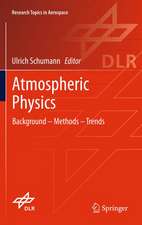An Introduction to Robot Technology
Autor Philippe Coiffet, Michael Chirouzeen Limba Engleză Paperback – 23 feb 2012
Preț: 382.57 lei
Nou
Puncte Express: 574
Preț estimativ în valută:
73.21€ • 76.15$ • 60.44£
73.21€ • 76.15$ • 60.44£
Carte tipărită la comandă
Livrare economică 14-28 aprilie
Preluare comenzi: 021 569.72.76
Specificații
ISBN-13: 9789401161022
ISBN-10: 940116102X
Pagini: 200
Ilustrații: 198 p.
Dimensiuni: 155 x 235 x 11 mm
Greutate: 0.29 kg
Ediția:Softcover reprint of the original 1st ed. 1983
Editura: SPRINGER NETHERLANDS
Colecția Springer
Locul publicării:Dordrecht, Netherlands
ISBN-10: 940116102X
Pagini: 200
Ilustrații: 198 p.
Dimensiuni: 155 x 235 x 11 mm
Greutate: 0.29 kg
Ediția:Softcover reprint of the original 1st ed. 1983
Editura: SPRINGER NETHERLANDS
Colecția Springer
Locul publicării:Dordrecht, Netherlands
Public țintă
ResearchCuprins
1Robotics: an introduction.- Areas of application of robotics.- The new industrial revolution.- The aim of this book.- 2Robots and robots in use.- Origin of the word ‘robot’.- Definition of the word ‘robot’.- Characteristic properties of a robot.- General structure of a robot.- The robot environment.- Task description.- Role of the computer.- Typical industrial robot.- Classification of robots.- Robot generations.- Existing robots and the robot market.- 3Representation of a robot.- Functional representation.- Graphical representation.- Arms: structures in use.- Structure of end effectors.- 4Degrees of freedom of a robot.- Degrees of freedom of a rigid object.- Degrees of freedom of a robot.- Degrees of freedom specific to a tool.- Degrees of freedom and mobility.- 5Basic principles of control.- Variables to be handled.- The main levels of control.- 6Control based on the geometrical model.- Geometrical model: a much Simplified robot model.- Geometrical or positional control.- 7Control based on the kinematic model.- Kinematic model: a simplified robot model.- Variational control.- Characteristics of kinematic control.- Models and dynamic control.- 8Actuator servocontrol.- Principles of servocontrol.- Mathematical study of a servo-system.- Specific practical problems involved in the use of a robot servo-system.- 9Robot actuators.- Pneumatic actuators.- Hydraulic actuators.- Servocontrolled hydraulic systems.- Electrical actuators.- Servocontrolled electrical motors.- Transmission systems.- Conclusions.- 10Internal sensors.- Movement or position sensors.- Speed sensors.- Stress sensors.- Acceleration sensors.- 11External sensors.- Applications of external sensors.- Tactile sensors.- Stress sensors.- Proximity sensors.- Visual sensors.- 12Computer control.-Analog-digital, digital-analog converters.- Other types of converter used in robotics.- The program.- Conclusions.- 13Robot training and trajectory generation.- Methods of recording trajectories.- Manual control used in training.- Trajectory generation.- Trajectories in the task space and in the articulated variable space.- Control languages.- Conclusions.- References.- 14Robot performance and standards.- What is robot performance?.- Task performance.- Human performance in robot control.- Economic performance.- Performance standards.- 15Robots in use.- Examples of uses.- End effector components.- Conclusions.- Use of matrix calculations.- Handling real term matrices: a summary.- Components of a vector in an orthogonal set of coordinates.- Transformation of coordinate set.- Specific examples useful for modelling and control of robots.- Inverse transformation.- Definitions and equations.- Working principles.- Motor with induction control.- Motor with armature control.- Problems associated with dynamic control.- Dynamic control.- Effects of gravitational force.












